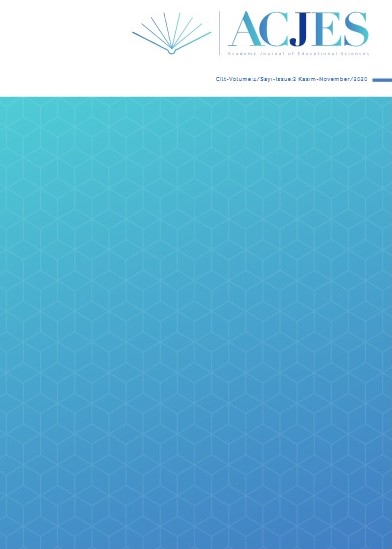Okul Öncesi Öğretmenlerinin Sınıf İçi Etkileşim Örüntülerinin İncelenmesi: Sınıf Söylemi Analizi Yaklaşımı
Investigating Preschool Teachers’ In-Class Patterns of Interactions: Classroom Discourse Analysis Approach
Author(s): Serenay Başalev, Yılmaz SoysalSubject(s): Preschool education, School education, Educational Psychology
Published by: Abdullah KALDIRIM
Keywords: Discourse Analysis; Pattern Of Interaction; Preschool Education; Systematic Observation;
Summary/Abstract: This study purposed to examine the patterns of interactions of two preschool teachers emerged during their in-class teaching. The participants of this study, which was designed as a case study (naturalistic inquiry), were two preschool teachers and 52 pupils. The data set of the present study included video-based records of the in-class implementations (n = 17, 302 minutes). Teachers’ discourses (e.g., articulations, externalisations) were analysed through the systematic observation approach that is a branch of sociocultural discourse analysis. In systematic observations, the unit of analysis was the analytical utterances (sentences) of the teachers. Each teacher-led verbalisation was coded through the Triadic Pattern of Interaction Coding Catalogue that was developed within the frame of the current study by a both data-driven theory-laden manner. The teachers displayed three different typologies of the pattern of interaction with different frequencies: Initiate-Response-Evaluate (IRE); Initiate-Response-Explicate (IREx); Initiate-Response-Follow-up questioning (IRF). The IRF triadic was mostly enacted by the teachers in addition to the IREx triadic that was staged in order to explicate/elicit the cases and phenomena under consideration and the IRE triadic that was displayed for assessing the student-led utterances. Furthermore, it was detected that which typologies of the talk dyads, e.g., T-S (teacher-student) and/or S-S (student-student), were preferred by the teachers. The teachers had intensified interventions in the classroom talks and the dialogues between student-student were substantially restricted. In line with the deduced findings, suggestions were offered in the context of teacher noticing.
Journal: Academy Journal of Educational Sciences
- Issue Year: 4/2020
- Issue No: 2
- Page Range: 111-127
- Page Count: 17
- Language: Turkish

